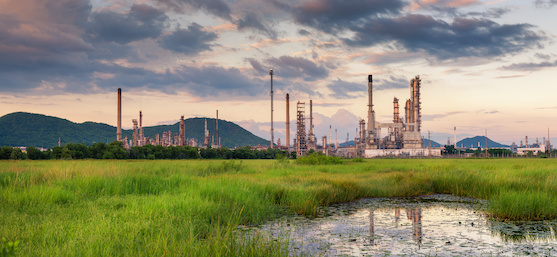
Is a Fear of New and Emerging LDAR Technologies Holding You Back?
October 22, 2021
The status quo can feel safe. After all, there’s comfort in knowing your LDAR program is compliant and your Method 21 costs are low. But comfort can turn into complacency. And when that happens, sticking adamantly to the tried-and-true technologies and practices of yesterday can end up costing you much more in the long run.
New and emerging LDAR technologies hold great potential in helping you to detect leaks sooner and more efficiently than standard Method 21. Many innovative LDAR technologies have even been around for years now, but they’ve only recently advanced to the point of industry proliferation. Still, you might find yourself reluctant to explore these LDAR technologies. And that’s because there’s always a tinge of fear in trying something new or different. It’s easier to dismiss AWP outright, and at Montrose Environmental Group, we’ve heard every dismissive thought under the sun:
“Our LDAR program is compliant, so there’s no need to fix what’s not broken.”
“There’s too much red tape involved with getting AWP cleared with federal and local regulators.”
“The upfront costs of these new technologies are a non-starter. It’ll take forever to see a return on our investment.”
Do any of these statements ring a bell? If so, I have some bad news: You’re selling yourself (and your LDAR program) short.
The Drawbacks of Fear-based Decision-making
We all fear change. It’s the whole reason why the term “comfort zone” exists. But progress is only made when we challenge ourselves. Case in point, think about the ins and outs of standard Method 21. Someone with a handheld detector walks up to and traces each individual component (as required by regulators) to see if a leak is detected. You already know it’s a monotonous and very time-consuming task. In fact, completing a single cycle can take months.
“But still,” you say, “my LDAR program is compliant and I’m happy with my program costs overall.” And sure. You’re doing what the regulators ask you to do, but imagine how long it can take during this months-long process to find one or more leaks. The longer a leak persists, the more product you lose. And the longer it takes to scan for leaks, the longer you have contractors on site, which also introduces greater safety risks. Plus, what about all the components you’re not checking? After all, you’re more than likely not routinely scanning a component if doing so isn’t required by regulators, right? There could be small leaks under your nose costing you big in lost product over long periods of time.
Taking a Leap to Embrace New and Emerging Technologies
Now let’s compare standard Method 21 to the benefits of Optical Gas Imaging (OGI), a technology allowed under AWP. A facility that might take 40 days to scan using a handheld Method 21 device can be covered in its entirety by OGI in approximately two days. Leaks are found and repaired much sooner, and components that regulators don’t even require you to scan are checked for leaks with little to no additional effort. Additionally, contractors using OGI to detect leaks don’t have to physically approach and manually scan the surface of each individual component; instead, they can use an infrared camera to check for leaks holistically from a safe distance. And “ghost leaks” are also eliminated, since OGI technology shows contractors precisely where a leak is.
With a technology like OGI, your LDAR program becomes much more efficient. In fact, AWP implementations see up to a 90% greater emissions reduction compared to standard Method 21. So even if OGI has a higher upfront equipment cost, most companies benefit from greater product retention. And with the right OGI contractor, AWP can be so efficient that overall LDAR program costs are reduced. This translates into a fast return on investment for a program that catches more leaks faster while improving on-site safety.
Breaking Out of the Method 21 Box
OGI is only one of many LDAR technologies that can help you drastically improve the speed, accuracy, and safety of leak detection. And until you take the time to learn more about these other AWP solutions, you won’t know the potential benefits they can provide. For example, Montrose Environmental has also developed portable mobile methane leak detection and triangulation technology, which uses a proprietary algorithm to triangulate the origin point of a methane leak within a meter of its source. We also use unmanned aerial systems (UAS, or drones) to conduct flyovers of our clients’ facilities to identify leaks in tank tops and other components.
How effective are these technologies? The clients we’ve helped at Montrose are finding time and time again that the dollar value of retained product more than offsets the costs of investing in advanced LDAR equipment.
How Montrose Can Help
Montrose Environmental Group has developed and continues to iterate on and improve its own AWP methodologies. We work with our clients to design and implement an LDAR program customized to fit their precise needs, using the right combination of one or more technologies that ensure maximum efficiency for the highest possible return on investment. Additionally, we help our clients achieve and maintain compliance to any local and federal regulations regarding AWP.


